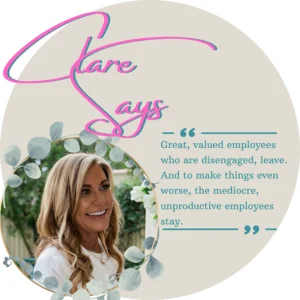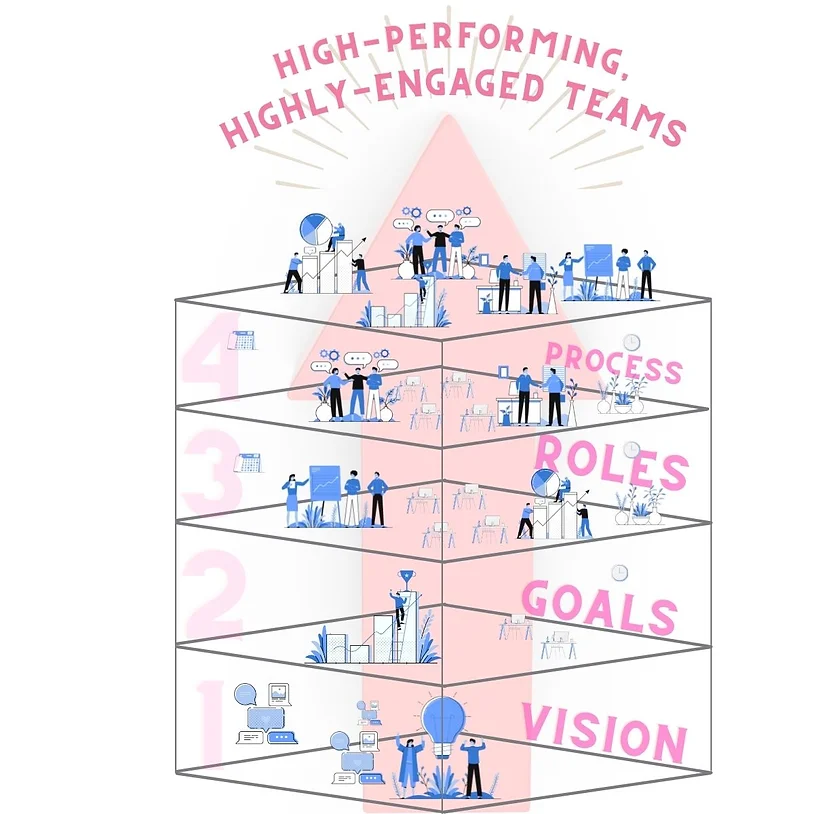
We’ve all heard the idea that employees don’t leave companies, they leave their bosses. And while there’s a lot of truth to that, it’s important to understand why. The current situation is that way too many good people are leaving their jobs. According to Microsoft Work Trend Index, around 40% of employees want to leave their jobs this year, and US studies show that 25% are planning to quit over the next few months.
What makes this even worse is that, many times, employees bond in their misery and they resign in groups. This leaves the already struggling company with even greater challenges.
Losing Great Employees: The Warning Signs
When employees are leaving an organization, it means that they are either not engaged, not utilizing their skills, or both. And that means that the company has not created a culture of highly engaged, highly productive employees. And in a nutshell, this is the precise role of leadership in any organization.
What does it mean to be highly engaged and highly productive? You can see them from a mile away! Consistently confident, competent, accomplished, achieving goals, self-assured, self-reliant, inspired and they inspire others. They are enthusiastic, ready, and able to do what needs to be done. These employees are in no hurry to leave. They see the future and they’re in it.
In an organization with low employee morale and retention, too many employees have low or unpredictable performance, they are often confused, make mistakes, and have to do a lot of re-work. Their processes create many inefficiencies, and they often feel discouraged and frustrated. These employees fantasize every day about leaving for a better life. And while this is sometimes an individual issue or a bad hire, that’s not the norm. What’s very common is for whole work groups, departments, regions, or organizations to be in the same boat.
Read more: CLARE SAYS: The 8th Waste
This is a real problem. Great, valued employees who are disengaged, leave. And to make things even worse, the mediocre, unproductive employees stay. We’ve seen this in multiple organizations and when we are called in to help, it’s a critical point for any organization.
Why Employee Retention is Important
Looking for a new job can be incredibly stressful. And for an organization, finding the right people to fill open positions is an ongoing challenge. Regardless of the size of your organization, the entire hiring and onboarding process is incredibly important as doing it poorly can result in a massive loss of time, resources, and money. Not to mention the stress that is absorbed by employees and potential candidates. Financial estimates of the cost of a bad hire can range from 5 to 27 times the amount of the person’s actual salary.
It is important to understand that hiring the right people is the first part of the equation. The second part is properly supporting and developing employees so that they become highly engaged and self-reliant performers.
CASE STUDY – And the Steps to Stop Valued Employees From Quitting
One of our customers had recently acquired a company that had a team of seasoned experts in a highly desired specialized product line. They were a truly exceptional team with strong and diverse skills. They were clear on the direction of the company, clear on their goals, and they knew their roles to achieve those goals. They had a tight process. It wasn’t perfect, but they knew how to work efficiently and effectively with what they had. That is, until the integration.
Just like most people who hear that a major change is about to happen, they had their concerns as soon as they heard that they were to be acquired. They were assured of all the great benefits that were to come along with the acquisition, and they were cautious but hopeful.
In one abrupt move, in a matter of days, they no longer understood the vision of their new organization, they did not have clear goals, their roles became generic and ambiguous and the once tightly run process was replaced with a huge, clunky software application.
Their well oiled machine was now a big square peg in a perfectly round hole.
The individuals were no longer able to do their jobs efficiently or effectively. They were not allowed to manage their day-to-day tasks in a way that worked. They had so many blind spots, communication suffered, and their customers were unhappy. People individually got the courage to speak to HR. And after HR had heard the theme of discontent, they intervened by encouraging the newly acquired team to be patient and to be good team players. Their new leader (newly hired from a competitor and clearly a fan of the “stick” instead of the “carrot”) made sure to let them know that he had a big enough network that he would have no trouble replacing them all should they decide to not be “good team players”.
They bonded over their common miserable situation. They had experienced what it was like to be an exceptional team of highly engaged, highly productive people. And, just like that, they were discouraged, lacked confidence and were not in a process where they could be successful.
They saw no signs of things getting better. Their only options were to lower their standards and stop caring, OR to leave the organization. And because they were a great team, they worked this out together and decided to resign… as a team.
This is where we came in. We had to work with the leaders of the organization to rebuild a foundation and system for this team of “Players” to thrive.
There are 5 necessary steps that had to be taken and in this order. And this is what we had to do.

1. VISION
Give them a clear description of the desired future state. Forget the fluffy vision statements. Tell them in a tangible way where the organization is going. How will our organization look in 3 or 5 years? And be specific so that they can align their work with this vision.
2. GOALS
Define their specific, meaningful targets. To make it to the vision, we have to reach some goals. Be clear about their specific targets so that they can measure their progress and stay focused on meeting those goals.
3. ROLES
Clarify their role in achieving those goals. Make sure that they understand what is expected of them. Are they accountable for the goal? Are they doing the actual work or action items, or do they have the resources to lead? Are they a consultant who advises? Who are the other contributors to the goal?
4. PROCESSES
Provide clear direction on how work gets done and ways to improve. Clarify procedures and processes so that they know how things work. Organize meetings, and clarify how decisions are made. For processes or procedures that don’t work well, provide a structure for problem-solving so that they have a way to work as a team to continually improve.
5. HIGH-PERFORMING, HIGHLY ENGAGED TEAMS
This is the result. But leaders must maintain this by solidifying a means of communication so that they can partner with their leaders to determine where they need direction and support. No matter their level of development in the current role, no matter how long they’ve been in the role, they will need some amount of direction and support. Direction to clarify goals, and priorities, and to maintain alignment with the organization. Support to keep confidence and enthusiasm about the work that needs to be done nice and high.
Now, does that sound so hard? It can be. If you have a culture that rewards chaos and heroes. If you have leaders that prefer ambiguity and confusion to clarity and accountability. Or when critical information is inaccessibly stored in the brains of a select few. If broken processes are allowed to go on and on…creating constant and repetitive frustrations for those working in the process. Yeah, then those 5 steps above will be really hard.
Just like most things that are worthwhile, it can take some dedication and perseverance to change bad behaviors and eliminate the top reasons why employees leave their jobs. And doing so means that we can not only stop valued employees from quitting together, but we can bring their engagement and their performance to new heights. We can tap into their diverse skills, creativity, and energy and see performance and engagement soar.
The need for flexibility, adaptability, and resilience is here to stay. And in order to thrive and create workplaces that we can truly enjoy, we’ve really got to get the basics right. Whether you are a leader or an employee, you should feel great at the end of your work day. The time should fly. You should speak with your friends and family with joy and enthusiasm about your job, no matter what it is. If you are lucky enough to be a part of an organization that nails those 5 steps, you can have that. Otherwise, what’s the point?
Unlock Your Full Potential: Enroll in our Business Development Courses.










